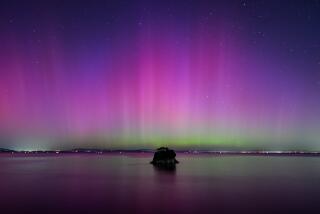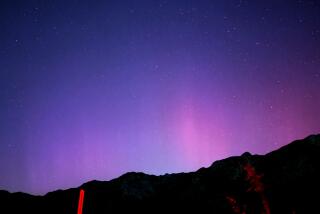COUNTYWIDE : Philippine Volcano Colors Local Sunsets
Blood-red sunsets with salmon afterglows visible from parts of Ventura County this week are a gift from Mt. Pinatubo in the Philippines, scientists said.
A cloud of volcanic ash and gases from the volcano’s recent eruptions has crossed the Pacific Ocean on trade winds and is drifting high over Southern California, said Jim Margitan, an atmospheric chemist at the Jet Propulsion Laboratory in Pasadena.
Margitan said he observed spectacular sunsets last weekend that he and his colleagues believe were caused by the volcanic cloud.
“We do have some data that shows a large cloud about 10 miles up in the stratosphere,” Margitan said. “The intensity of the sunsets will gradually fade as the ash disperses and falls. When the particles start settling, the cloud will thin out and expand.”
The ash cloud was first observed last month by scientists in Hawaii who said it interfered with their photographs of the solar eclipse on July 11. Other sky watchers at the Caltech Solar Observatory in Big Bear are complaining that the ash is hurting their observations, said Alan Wood, a Jet Propulsion Laboratory spokesman.
Stuart McDermid, manager of earth and solar sciences at the JPL’s Table Mountain facility in the San Gabriel Mountains, said he first observed the ash cloud about the Fourth of July. The volcano began erupting on April 1, and the largest eruption occurred June 15.
“The volcano has supposedly put out twice as much material as did El Chicon, the Mexican volcano, in the early 1980s.” At some point, the particles in the cloud will become heavier and be brought to the ground by rainfall, McDermid said. However, that will occur far beyond California, he said.
“It’s been nice to watch the sunsets,” said Kent Field, an air-quality monitoring specialist with the Ventura County Air Pollution Control District.
Field said the phenomenon is similar to what happens after a forest fire, except the particles are much higher.
“What we see is the red wavelength . . . bouncing back after all the blues and greens are bounced out. The particles are there during the day, but we just don’t see them.”
More to Read
Sign up for Essential California
The most important California stories and recommendations in your inbox every morning.
You may occasionally receive promotional content from the Los Angeles Times.










